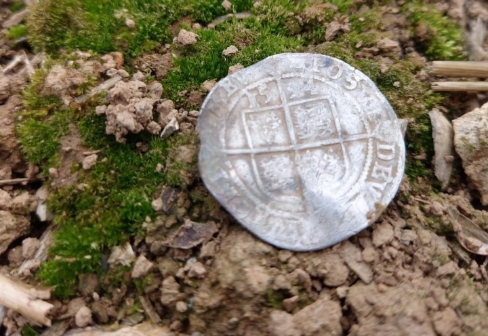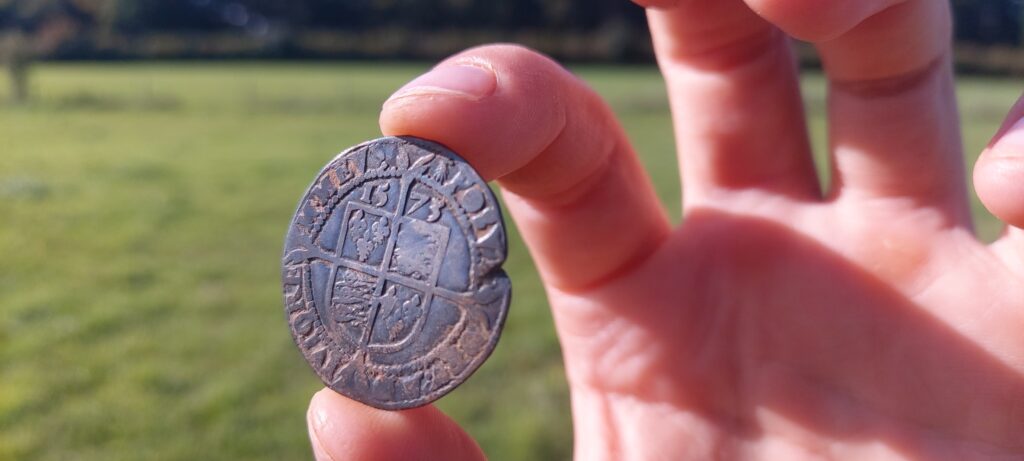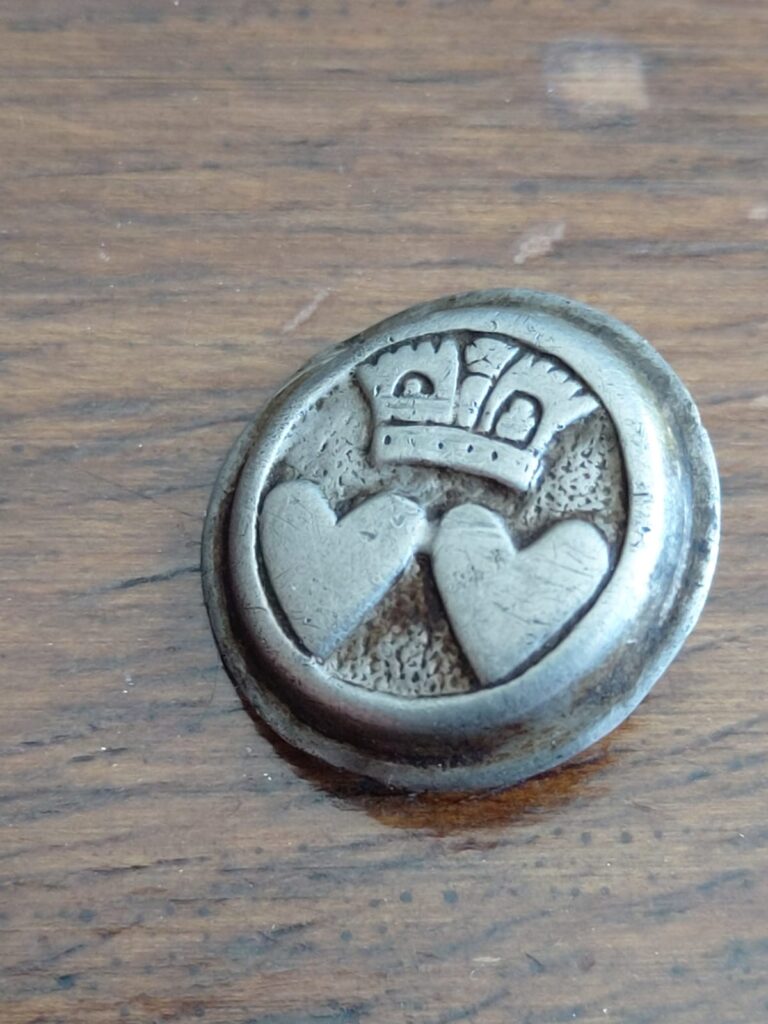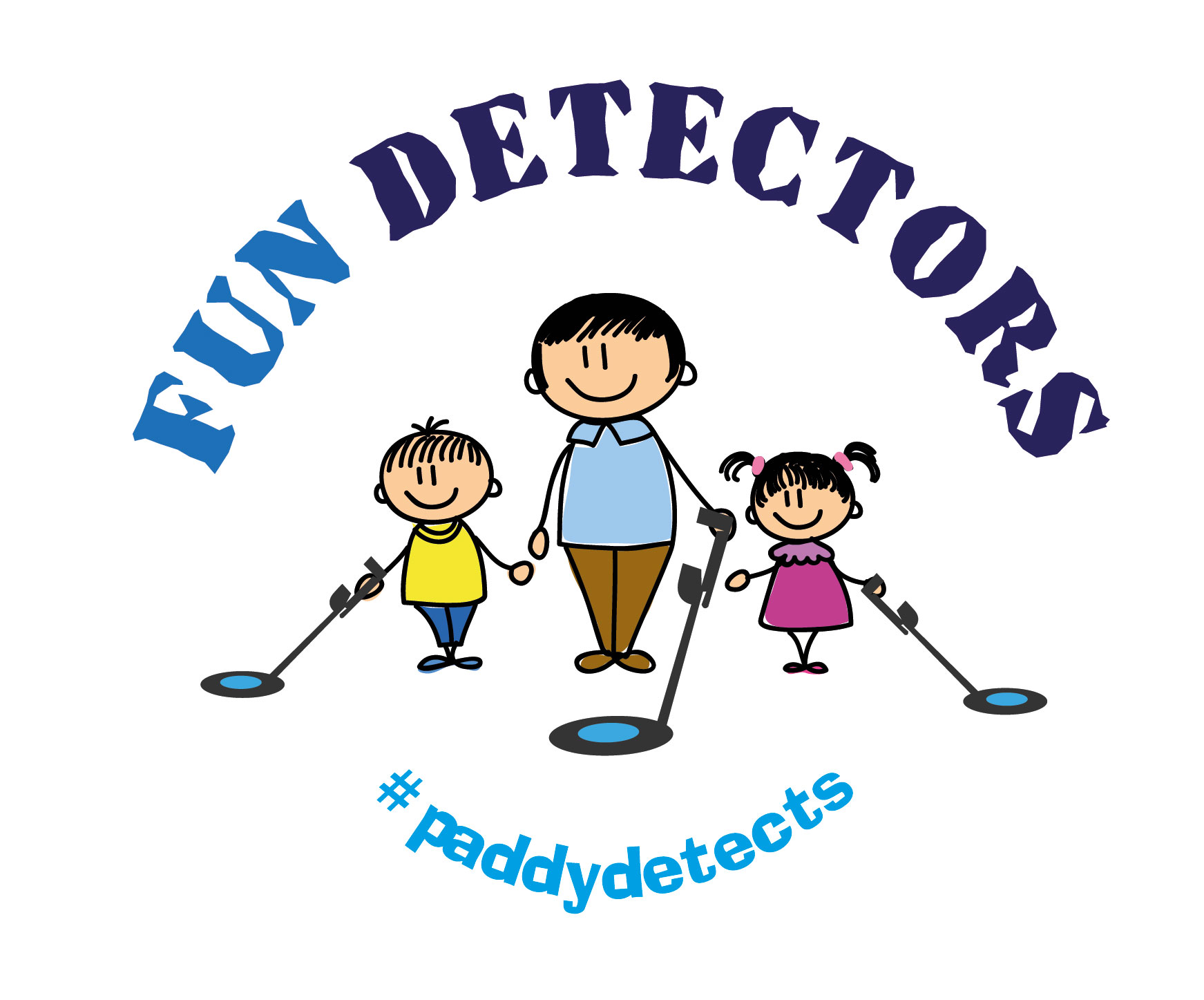
“What do you find metal detecting?” The question I’m asked more than anything else! If the truth be known I find a lot of rubbish. Sometimes I feel like I am just providing a clean up service to the countryside as everything we dig up we take home with us, even if it is just rubbish! However as you will have seen if you’ve viewed my YouTube Channel, Paddy Detects, amongst the rubbish there can be some amazing finds. And that is why we do it, you never know what a signal will be until you have dug it up. The wonder and the what if, is what keeps you going on days when you feel like you’re just digging rubbish. I’ve had many days when I’ve felt like a field was just full of junk and then suddenly something AMAZING pops up.
Amazing is a subjective statement, what is amazing to one is not necessarily amazing to the next detectorist. However there are some finds that tick the box for all detectorists. Top of the list for most are coins:
Hammered coins – made by hammering a blank piece of metal circular in shape between two dies these coins date from the first millennium BC to the 17th Century. I love finding hammered coins, they are so decorative but due to human error and the incidence of the coin moving before it was hammered no two are exactly the same. In addition silver hammereds can be clipped, meaning when they were in circulation the silver content was more valuable than the value of the coin itself so edges of the coin would be removed, “clipped” and the silver sold for it’s raw value – a crime with a high penalty if caught. A severely clipped coin can be difficult to identify but having seen many hammered coins now I do have a bit of an eye for identifying them, then I attempt to confirm my assumption by referring to my coin book.

Roman – dating from 500 BC to AD 476 Roman coins can be copper, bronze, silver or gold featuring images of mythical animals, gods and goddesses, or particular symbols. The Roman Empire period (27 BC – AD 476) saw the coins feature portraits of leaders, such as Julius Caesar. Over the years, the Roman monetary system was affected by financial instability, and the currency system was revised, with denominations being changed. Most popular denominations throughout the Roman period are As, Dupondius, Sestertius, Denarius and I have a few of all of these. I constantly find it amazing that the coins have survived for such a long period of time and some of them come out the ground in an incredible condition.

Medieval – a vast period, the late 5th to the 15th Century the medieval period saw many changes in coinage due to the influence of different monarchs. All coins are hammered and can be bronze, copper, silver or gold or even a mix. Some contained marks to show where they were minted and others to prove they were not a forgery.

Elizabeth I was the first monarch to trial the method of creating coins by milling them in 1561, made by machine. However shortly after, it was stopped and then reintroduced in the reign of Charles II in the 17th century making Elizabeth I milled coins extremely rare.
Silver and Gold –Most Coins dating from the roman era are bronze with some silver and very few gold, however after the roman conquest the Saxon kings forgot about gold and bronze coins and focused mainly on silver. In 1343 there was the introduction of gold coins, starting with the Florin. According to my research only three of these remain, all now obtained by Museums. It is always great to find silver or gold, it feels extra special. We have lots of silver and between my Dad and I have been lucky enough to find six gold coins, the oldest being a Celtic Stater from the Durotrigus tribe dating back to 50 B.C.,


Artefacts – I love artefacts as much as I do coins. Artefacts are anything other than coins that are a “thing”. Something with a purpose, something someone owned and used. Our artefacts include military cap badges, Roman brooches, thimbles, sword pommels, horse harness fittings, Jews harp (a type of musical instrument), children’s toys from all periods, including medieval, and my best piece, Bronze Age Ribbon Gold, 4000 years old and now with the British Museum, and much more.





The hobby of metal detecting brings history to life. You see and feel items that were owned by our ancestors, it can spark an interest and a fascination in how people lived, how they travelled and how they survived. It has allowed me to learn so much, I can recall all the Monarchs of England no problem and classroom history now means so much more having seen actual items from the periods that I learn about.
It really is a fascinating and always surprising hobby. If you have questions on any of this information feel free to ask on the Contact Us page and we will reply as soon as we can.
See you on the next!
Paddy
